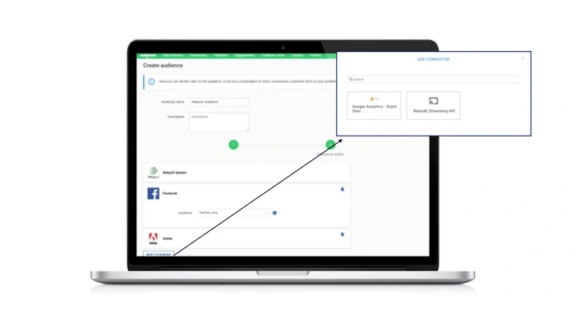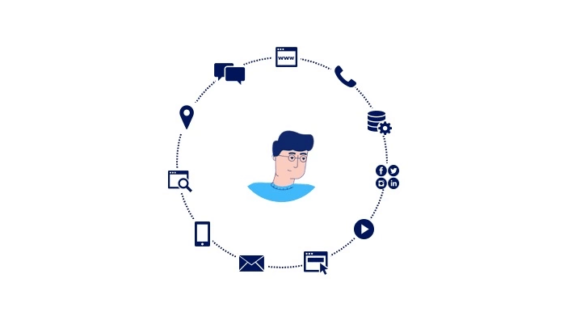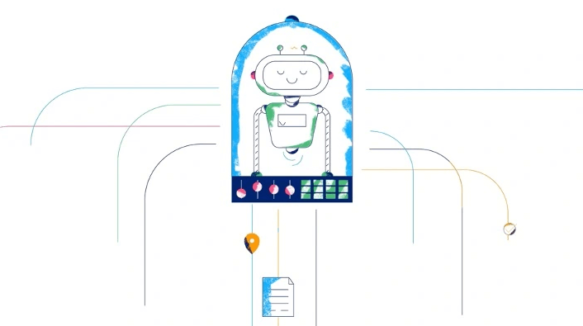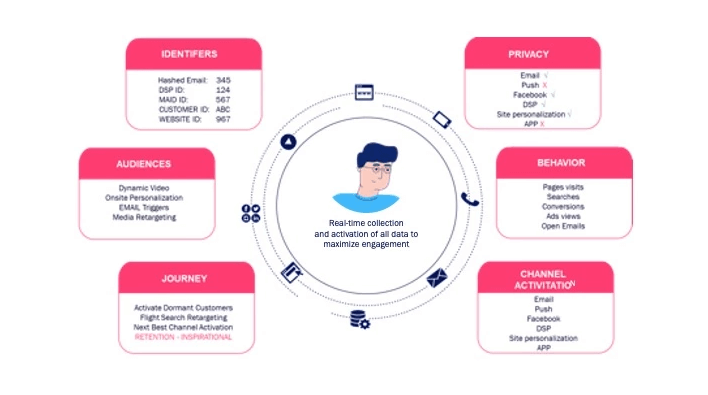19 August 2024
A journey from AI-curious to AI-first – Matija Cukac about harnessing the power of AI for product development
Anyone can use a little ChatGPT, but mastering AI is about something else entirely. Relay42’s Matija Cukac explains that being an AI-first company requires a long-term vision. His playbook for driving AI initiatives within an organization is to start small, iterate, continuously demonstrate value, and ultimately – build a team of believers.
The CTO vs Status Quo series studies how CTOs challenge the current state of affairs at their company to push it toward a new height … or to save it from doom.
“Your stakeholders are your ‘users,’ and you need to sell your idea to them.”
For Matija Cukac, advocating for new AI solutions is part of the daily grind. His work in Relay42 proves that becoming an AI-first company isn’t reserved for tech giants with the biggest budgets. With the right approach, any organization can harness the power of AI to transform its operations.
Matija shared his insights on how to introduce AI projects strategically. He explained why it’s important to start small and keep proving your concept to gain support and build momentum for AI initiatives. He also showed us the difference in AI implementation between the enterprise and startup environments.
If AI is on your mind right now, you don’t want to miss what Matija had to say.
About Matija & Relay42

Bio
A true data-driven mind with a flair for storytelling and humor. Passionate about AI, he’s worked on bringing many different solutions to the market and developing a unique understanding of digital product development.
Expertise
Agile software development, customer experience, product validation, coaching
Relay42
Relay42 is an Orchestration Customer Data Platform that uses smart tech to transform fragmented customer interactions into seamless journeys. With Relay42, companies can build sustainable relationships based on customer data. The only platform built for AI-driven customer journeys with real-time connectivity to all systems and touchpoints, used by global brands like KLM, Heineken, Mazda, and FedEx.
Relay42’s AI-driven vision
Arkadiusz Kowalski: Hello Matija. Thank you for joining us today and taking the time to do this interview!
I know you’re working hard on Relay42’s customer data platform. You’ve recently implemented a new AI-based feature that leverages Amazon QuickSight. Where does it fit within your broader intelligent journey orchestration with AI?
Matija Cukac: Thank you for having me!
When it comes to Relay42 and AI implementation, we have partnerships with AWS QuickSight, but we also have our own innovation. It’s called Journey AI, or JAI for short, and it’s currently in Beta. The current release predicts user behaviors for our clients within the CDP (Customer Data Platform) scope of their industry.
Let me give you an example of how it works. For an airline client, JAI can predict where their users will fly next. If you’re on the airline’s website, based on your behavior, we can predict with up to 99% accuracy what your next flight will be. This allows our clients to target users or user groups with specific flights, like suggesting a trip to Madrid.
Does this also work for cross-selling? For instance, if you know I want to fly to Madrid, can you suggest booking a hotel, restaurant, or sightseeing tour?
That’s the idea. We aim to apply this across all journeys and use cases. We’re not there yet, so we’re still in Beta. But the goal is to apply this at any step or throughout the whole journey – cross-selling, upselling, hotels, flights, rental cars. Ideally, it would be applied to everything.
As a product leader involved in product development across various industries such as martech, e-commerce, and real estate, when did you realize AI’s potential to power modern product development? When did you really take an interest in it?
It’s been more than 5 years. I started looking into predictive analytics, which evolved into AI. At a previous company, we began exploring partnerships rather than building our own, and we came across OpenAI. We used their services before the ChatGPT 3.5 hype.
Even in those early stages, when it was more about predictive branching than true AI, I realized its high potential. Despite being flawed, it could still yield impressive results. That’s when my interest really took off, and I’ve been following its rapid development since.
Now, it’s evolving so quickly that it’s hard to keep up with all the AI tools being deployed daily.
So you were working with OpenAI before it was cool? You could say you’re an AI hipster?
Kind of, yeah. Personally, I like to automate repetitive work and focus on valuable tasks. Even when these tools were rudimentary, they still did the job. For example, I don’t know all Excel formulas, but if I can type in what I need and get the formula, that’s great. It saves me time from learning or googling it.

The importance of data for AI solutions
One of our past guests said that while each company can use AI-based tools to improve its productivity and efficiency, it can only use them commercially if it has a lot of good structured data. As a CPO of an AI-driven platform, would you agree with that?
It’s a two-sided question. If you want to enhance productivity with your colleagues, you don’t need a lot of data. Tools for Excel, HR, or payroll can be effective with small amounts of data.
However, you do need a lot of it for data-driven tasks specific to your role. Consider product management, for example, and say you want to build an AI-driven Jira alternative. That would require an extreme amount of data to understand how a company runs, including variables like sprint lengths, SCRUM usage, and backlog management.
What we’re trying to emphasize is the difference between using AI for internal efficiency and commercializing AI-driven solutions. If you want to be a company that commercializes AI, do you need good structured data?
Absolutely. When it comes to commercializing a product, that’s completely true.
We’re in an AI gold rush, and companies that use and handle data well will survive. Many of those that don’t will disappear.
If you work with a small amount of data and do not handle it properly, you’re not really AI-driven. You’re just doing basic predictive analytics.
At Relay42, we handle vast amounts of data for prediction. That’s the only way to do it. If you don’t use a vast amount of data, you’re going to be wrong. The longer you go, the more wrong you’re going to be.
To use a simple example, if I want to predict what will happen in the next 10 minutes of our conversation and I use just one variable, the chances are very low that I’ll be wrong. With two, three, and so on, the chances grow exponentially. And there are unlimited variables, right?
You’re having a drink now, and you could spill it. That changes stuff. Somebody can knock on the door. The fire alarm can go off. A lot of those things are data that needs to be considered.
Data is definitely crucial. Are there other things that companies can do to increase their chances of success with AI?
The other factor concerns how you handle the data. I’m not talking about compliance, which is also extremely important. I’m talking about cleaning up the data.
Going back to the previous example – if the fire alarm goes off in the building next to you and your building is not evacuated, but we’re still considering that data, it will mess up our result. We have to clean up the data so that it’s only relevant to you, which is a really hard job.
Then, it’s also about how you use the data. That’s a different layer of variables. When you add a timeline to something, that changes things drastically. It’s not the same if you spill the drink now, which would change things, or in the last 10 seconds of our call, which would be irrelevant.
So, in a simplified way, we’re getting the data, handling the data, and producing results – but the secret sauce is how you do all of this.
So it’s about the what, the how, and…
And the when.
If you want to use AI commercially, you need to figure out the what, how, and when of your data.

Augmenting your product with AI
AI can augment existing features or transform entire products. For example, HR software can use AI to improve vetting processes. What advice would you give to companies looking to augment their products with AI?
If you’re trying to augment any product with AI, you need to be very careful. Where is your barrier to entry the lowest?
Start by augmenting each part of the product with AI where it’s most feasible. For instance, in HR, trying to use AI to determine the ideal candidate to hire immediately would be challenging because you’re missing many parts of the funnel.
Instead, start with simpler tasks – like finding proper keywords, matching on LinkedIn, or doing background searches. Combine these into one process to identify candidates for the interview. Then, match that with overall success rates as you move to the next stage.
Accuracy is crucial. If your success with AI-based prediction is very high, you can move to the next stage. But if it’s low and you still move forward, you’re adding variables based on faulty data, which will cause more failures.
So, we need to look for the lowest entry barrier in the product flow. Given our current data quality and quantity, where can we get the highest accuracy with AI?
Correct. If you’re looking at 10 pieces of the funnel, you need to go piece by piece. It’s not about which one is easiest to augment but which will give you the most accuracy. That might be the hardest one, but accuracy is what you want.
If we choose the easiest piece to augment but it has the lowest accuracy, everything else is screwed.
How should we measure the success of an AI augmentation initiative?
You establish what the outcome was before the augmentation and whether it has improved.
Say you were hiring and had a lot of bad interviews – 3 out of 10 candidates passed the first round. That’s your benchmark. After the augmentation, did that number increase to 4 or 5? If it did, then that’s a success.
That’s why data is important. Just make sure that your data is accurate and handled properly. It’s very easy to play with numbers to skew the result in a way that proves that you’re right. There’s nothing evil about it, but it’s an easy trap to fall into.

Gaining support for AI initiatives
Let’s say I’m a product manager who’s identified that the 7th element of our product is best suited for AI augmentation. How do I start this conversation and gain allies among stakeholders?
First, talk to people about the idea and its goals. Most people don’t like extra work, so you need to win them over. This will also help you identify who believes in AI and who doesn’t – there are many skeptics, especially among engineers.
The biggest hurdle is getting everyone to see the value of investing in AI. Once you’ve cleared that, explain why you want to add AI to that specific part and how it will benefit the company. Connect it to the company’s overall mission and goals.
That is the only way to convince stakeholders. If I want to improve the product with AI, I’m going to say – this is the return we’re going to get. This is the business impact. This is how it connects to our goal this year. This is how it connects to our 5-year vision.
Only then will I start talking about the actual AI – how it works, how it will fit into my vision, etc. Then, we’ll include tech leads, the CTO, or whoever we need to go over technical restrictions.
What you need to sell is that the product will get better. How can someone disagree if I prove that investing in AI will bring us closer to realizing the company’s mission?
That sounds like a boardroom presentation. I’ve heard that you should start with informal conversations, planting seeds of the idea during water cooler conversations. Then, when you give a formal presentation, people already know what you’re talking about.
Of course, but that is part of everyday work, right? Because it’s not some master plan that you go around planting seeds. As a product person, you’re always thinking about how you can make the product better. And if you really want to improve the product, you have to talk daily with the head of marketing, head of customer success, or head of sales.
You have to follow the market, too. For example, Google announced that it would not deprecate cookies at all now. If you follow news like that, you talk to people, you discuss these trends, and you can always say: “Hey, what if we improved the product with X in mind?”
So I agree with you. Talking about AI every day is the way. But planting seeds makes it sound like I’m a villain with an evil plan. I think it’s simply what every good product person does. You talk daily with everyone. You’re very aligned on what you do. And then solutions follow.
Let’s sum this point up with a generalized, step-by-step overview of pushing AI ideas forward. How should one introduce their idea to a potentially skeptical audience and organizational culture? I’m thinking about vision, gathering allies, and improving ideas through feedback, testing, and implementation.
Think of it like being an entrepreneur within your organization. Your stakeholders are your “users,” and you need to sell your idea to them.
Your job is to turn people into AI believers by proving it works. Some will trust you just based on your pitch. For others, you’ll have to build something, present it, and show the tangible results.
It’s basically a rinse-and-repeat process; you just keep adding variables and reaching out to more stakeholders. Like in a video game, you go from level 1 to level 2 and so on until you get to the final boss.
If you’re confident that AI will make your product better, you need people to work with you as a team. For that to happen, they need to believe in you – and they won’t believe without proof.
So, the key is persistence and continuous improvement. You start somewhere, prove your concept, gather support, and keep pushing forward.
AI implementation: enterprise vs startup
Can I get by entirely with third-party tools for initial AI implementation? Or do I need AI specialists and developers on board to even consider getting started?
There are two ways to answer this.
At Relay42, we work with enterprise clients. We have many certifications and compliance requirements to follow. So, even if we want to use an outside tool to test something out, it needs to go through compliance, which means legal and marketing are already included. And that’s just for a PoC.
Then, to implement that into the platform itself, you have to cover the technical stuff, which creates another layer. A tech lead will look at it and say: “I see a security issue here! We cannot connect this by just installing the snippet. We need to do this through the backend.”
If we’re talking about a startup mentality and MVP creation, I strongly encourage you to use outside tools and not include everyone at the beginning. Your case is going to be stronger if you bring a ready PoC to the table.
Again, plant the seeds, talk about it, and see if people like your AI idea. But before that formal presentation happens, get an outside tool and play around with your product. Then, you do a presentation and say: “We’ve been talking about it recently, so I did a PoC, and it looks like this.”
That, I think, is the proper sequence. When you present a PoC, nobody can say: “You don’t have any proof if it even works.” Sometimes, you might need to include developers, or marketing, sales, or whomever. It’s case by case, so it’s hard to give a definite answer if you’ll be able to build a PoC alone, but it’s worth a try.
What do you think about cooperating with third-party software partners? Could this be a good way to acquire AI expertise?
Absolutely.
I’m a strong believer that you should outsource anything that’s not your core product. In this AI bubble era, there are many great AI tools out there, like Amazon QuickSight or OpenAI’s many APIs. You can’t build a model like GPT-4 on your own. We all know how costly and difficult that is.
So to say, “Let’s build our own AI,” would be kind of ludicrous. You want to use outside tools. If you want to build similar tools to compete with those big players, you’re in a different business.

Becoming an AI-first company
At Relay42, AI appears to affect every aspect of the business. These days, there’s a buzzword going around – “AI-first company.” Would you call Relay42 an AI-first company?
That’s what we want to become, though we can’t honestly say that we’re an AI-first company today. But if you want to do a play on words, we’re a data-first company. And AI is data-first, so maybe?
We handle a lot of data. Thanks to that data, we can become a true AI-first company when we complete our AI product. And we’re considering AI for everything that we do. For journeys, for audiences, for everything.
Many AI-first companies like OpenAI, DeepMind, or Relay42 are also data-driven. But from what you’re saying, AI-driven doesn’t always equal data-driven. Is that correct?
Lots of companies out there are saying they’re AI-first, but they’re built on OpenAI’s, Google’s, or somebody else’s data. They’re data-driven, but it’s not their data.
The data that we handle is our customers’ data. That’s an obvious difference. Are you using somebody else’s data or your own data? If you have yours, you can apply any AI tool to it, and it will work.
If you removed OpenAI from companies built on it, would their products still be AI-driven? The answer is no because they don’t use their own data or models.
Don’t get me wrong, these are valid businesses! That’s why OpenAI provides APIs. But if we shut down all these third-party AI providers, it’s likely that most companies calling themselves ‘AI-first’ would immediately fail.
So the ultimate question is – are you building your own AI products, or are you using somebody else’s AI products to call yourself AI-first? That’s why I’m seeing an AI bubble right now. Many companies don’t provide their own AI, and eventually, their true value will be exposed.
To be truly AI-first and data-driven, you must invest in in-house capabilities and expertise. How did Relay42 grow its know-how into what it is today?
You hire somebody who knows what they’re doing and is passionate about it. Someone must have a proven PoC, know-how, ideas, and product knowledge.
We have an exceptional AI/ML team. Our other developers also understand that space. If you hire people who can neither build nor even understand AI tools, you won’t go far. It’s best to hire people with the skills to develop AI tools themselves.
You want people who are intimately familiar with your product and also know AI/ML engineering. When you combine these skills, you can develop something truly unique.
How was it when you first started? Did you focus on attracting experienced candidates, or did you prefer to foster talent internally?
It was a combination. We’re a very product-driven organization, very driven by our team’s interests. If you show interest in something, we will support that as long as it aligns with our long-term vision and goals.
That’s how it started for us. One of our teammates was very interested in AI and had expertise in it. We supported him in developing that talent.
So, it was a mix of recognizing internal potential and nurturing it rather than solely relying on external recruitment.
Resources
What would you recommend as a good source of knowledge or inspiration for leaders who want to augment and transform their products and business with AI?
I like to expand my network and discuss AI with people. I’m also part of a lot of communities, like the OpenAI subreddit. I follow what’s going on, talk to people, go to events, and so on.
It’s great to talk to people who are against AI and understand why. Our disagreement is not a conflict; it’s just a learning curve.
When it comes to specific material, there’s plenty on both the technical and non-technical side to follow. There are a lot of great repositories on GitHub. On the non-technical side, you can try different subreddits or just read publications like Wired and Business Insider.
But there’s no one resource that will teach you everything. This industry is evolving very quickly. You have to become a part of it if you want to stay informed.
What’s next? Three actions for CTOs to take
What do you think about Matija’s AI insights? If you want to try some of them in your organization, follow these steps:
Prove
- Begin with a limited AI implementation or tool to prove results to stakeholders,
- acquire, clean, organize, and properly handle your own data,
- gradually expand your AI initiative.
Iterate
- Identify the part of your product with the lowest barrier to entry and highest potential accuracy for AI,
- balance using third-party tools for non-core functionalities with developing in-house capabilities for your core product,
- aim to create unique AI solutions that aren’t entirely dependent on external providers.
Foster
- Foster internal talent interested in AI, hire specialists who understand both your product and AI/ML engineering,
- engage in continuous learning through communities, events, and diverse resources,
- build a team of AI believers.
Remember: becoming an AI-first company is not about quick fixes but a commitment to long-term transformation.
How does Relay42 use data to offer AI-driven personalization?
Check out the official website to read expert articles and find out more about Relay42’s capabilities. Request a demo.

